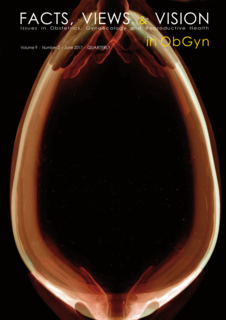The prognostic value of perifollicular blood ow in the outcome after assisted reproduction: a systematic review
assisted reproduction technologies, ICSI, IUI, IVF, perifollicular blood flow, prognostic marker, fertilization rate, pregnancy rate
Published online: Feb 16 2018
Abstract
Background: The overall final outcome of assisted reproductive technologies (ART) is still more often a failure than a success. Assessing perifollicular blood flow (PFBF) is one technique to predict and possibly improve this outcome. The aim was to provide a structured review of studies concerning PFBF and its prognostic value in patients undergoing ART, including IUI (intrauterine insemination).
Methods: PUBMED, EMBASE and Cochrane Database of Systematic Reviews were searched for relevant studies published until December 2016. As key words ‘Perifollicular blood flow’, ‘IUI’, ‘IVF’ and ‘ICSI’ were used. Results: A total of 14 articles were included in the current review. The results are very heterogeneous, though there is evidence that measuring PFBF could be a good prognostic marker for oocyte and embryo quality, but even more for pregnancy rate after IVF/ICSI. This finding is not observed in studies concerning IUI.
Conclusions: Our results highlight an urgent need to investigate the role for PFBF assessment by Power Doppler in ART in randomised controlled trials.



